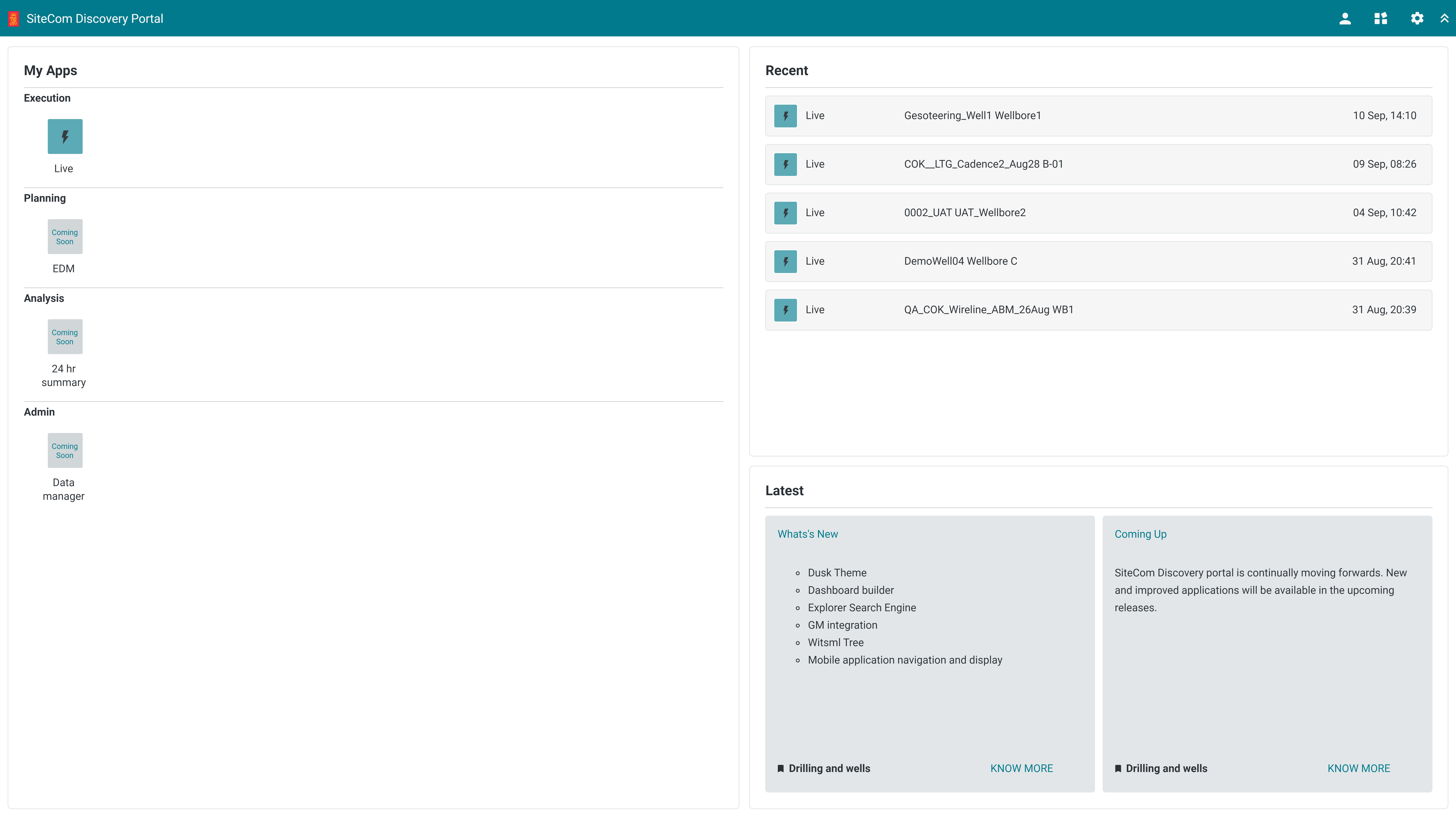
Kongberg’s virtual collaboration services ensure customers get the data-driven insight and expertise they need, where and when it is needed. (Source: Kongsberg Digital)
[Editor's note: This article originally appeared in the November issue of E&P Plus. Subscribe to the digital publication here.]
As Kongsberg Digital has interacted with customers in the past six months since the pandemic lockdown, the feedback circles around two main points:
- Operators would have been better equipped to handle their operations if they had been more digitally mature; and
- Workers have embraced digital technology as they experience the benefits directly.
In that sense, 2020 has shown the world’s industries that the time is ripe to start digitalizing.
At the beginning of 2020, most industrial players knew that digitalization would impact business sometime down the line. They had been presented with futurist scenarios of end-to-end interconnectedness and complete insight, and yet they had heard of many digitalization projects that failed. It was reasonable to question not if but when digitalization would make its great dent in the operation of traditional industries (i.e., when the technology was mature enough or when the organization could handle the change that comes with starting to digitalize).
Then a pandemic hit, and the world was forced to stay at home and conduct their work remotely. People’s everyday lives were flipped upside down, and workers needed to find and learn how to use the solutions that allowed them to do their work efficiently, interacting with people and the digital world.
Digital solutions
The problem does not seem to be that organizations cannot handle the change in workflows that come with digitalization, as long as workers are given sufficient time to learn. Rather, people are quite apt at picking up new tools when they see the benefits clearly. Does the challenge, then, lie in the technology? Is it mature enough? The short answer is yes, but that does not mean that the futurist scenarios of end-to-end interconnectedness and autonomous operations with absolute insight is on the table just yet. Rome was not built in a day.
Industrial players should not wonder so much when the huge transformation will hit but rather ask themselves, do I believe digitalization will affect my industry? Is my business prepared for the change that will come? How am I reaping the benefits of digital solutions available today?
Digital solutions have already yielded opportunities at all levels in the oil and gas industry, notable in the offshore operations where cost is higher. The collection, contextualization and sharing of data in common user systems does not only enable the companies to break down the traditional silos between different expert groups. As more data are shared with other trusted vendors, it is possible to unlock new value with large contextualized datasets, giving teams an improved foundation for decision-making in real time and a spur for innovating for even more value. With the advent of COVID-19, digitalization has emerged with an even broader purpose, enabling employees to remain productive at home. Kongsberg Digital ’s focus is to continue to shape technologies that enrich multidisciplinary teams and provide insight as well as elevate worker productivity through seamlessly replication of the office or rig work environment to their home.
Kongsberg Digital’s SiteCom platform for real-time data aggregation and storage was launched almost two decades ago as the new independent approach to standardization of real-time data in the well operations domain industry based on the WITSML standard for data exchange.
Standardize and centralize data delivery and facilitate a collaborative decision environment improving performance while reducing HSE and financial risk.
In this short video clip, learn more about SiteCom real-time data aggregation and visualization for all phases of well construction.
SiteCom provides secure long-term data storage and is reliable with 99.9% uptime. It offers vendor neutrality, fast data transfer from the rig with minimum latency, and high scalability in terms of rigs, sensors and high-frequency data. It also offers global mnemonic sensor name translation to minimize configuration and support analytics and hosting of algorithms to do real-time and historic data analysis. Additionally, the platform is backed up by a global network of support professionals available 24/7.
Offshore drilling
Offshore drilling was Kongsberg’s primary market when launching SiteCom. The high costs associated with offshore drilling operations makes optimal decision-making in real time even more important, and the collaboration between rig operator and oil company is crucial in making this happen. The challenging conditions in harsh environments with restricted physical accessibility combined with technical challenges like satellite connections with low bandwidth shapes the requirements for the stability and reliability of the real-time service.
Offshore wells are frequently deep and complex, requiring access to the most experienced personnel to ensure safe and efficient well construction. Such people are in high demand, and the introduction of remote operations has allowed higher utilization of their skills, allowing a single person to support multiple operations from a remote real-time operations center or even their office desk.
Applications
Uncertainty has become the new normal in today’s world. This uncertainty encompasses all aspects of operations from economic feasibility to the operational problems that will crop up and demand innovative solutions. To accommodate this dynamic market, Kongsberg has pivoted to develop compact discrete applications. When paired with the internal agile development cycles, the company can deliver continuously to customers with software that addresses their current need. This approach centers on a multi-application philosophy where individual apps are rapidly developed within a two- to four-month cycle. Regular customer interaction “tech wave meetings” enable the validation of the medium-term road map, early feedback from the end user community and an introduction of new functionality. This also serves as an additional opportunity for customers to influence Kongsberg Digital’s direction and priorities by pitching new ideas and concepts.
Each application is independent and unique in its purpose and function. Kongsberg Digital’s applications are tailored to a specific task or workflow, adapted to a user group’s terminology and intuitive with minimal to no training required. The applications offer platform independence; it must work anywhere on any device on any platform (PC, Mac, tablet or mobile). Immediate data is available with a focus on reducing duplicate input entry. The technology is independent from SiteCom core and other application updates, reducing the update overhead for our clients.
The SiteCom Discovery Portal and Live application were delivered on time and numerous new applications are in progress. Early adopters committed to the same strategy and are accelerating specific applications to meet their end user needs.

The Subsurface Action Review is a subsurface reporting application for operational events and observations. Its aim is to reduce the time it takes the operation geology community to collate, edit and present their findings on an ongoing basis to well stakeholders. After action, reviews from a given hole section and offset analysis are also supported. The efficiency enables the geologists to concentrate on supporting the rig, while not losing their valuable insights along the way.
A secondary example is that cross-referencing the plan during execution of a well operation is crucial to determine if the well is progressing according to the plan and identifying disfunctions. Historically this process has been cumbersome, and an unnecessary time sink due to the lack of open communication between independent data systems. This has resulted in inaccuracies and hand keying identical inputs multiple times.
To streamline this administrative task, Kongsberg Digital has developed an application allowing engineers to link files from external systems to SiteCom. In using the application, updates to the plan will be automatically synchronized across when the plan is amended with, for example, the as-drilled trajectory and section total depth. This also can be used to ingest time summary reporting data to contextualize historical data.
Uncertainty also extends to the size of operations and capex/opex. With little to no warning, a singular event (e.g., a virus) can shred the outlook for the year and its budget. All the SiteCom related products can be hosted and scaled on a monthly subscription basis in terms of both rig and user count depending on the application, which allows customers flexibility to survive the volatility of today’s market. The value of not paying for a solution until it is required can be the difference between a month in the black and a month in the red.
Case study
When COVID-19 first struck the oil and gas industry, organizations were collectively scrambling to get a global workforce situated in home office settings while maintaining an acceptable level of productivity. Utilizing Kongsberg’s SiteCom suite, a large international oil company was able to safely move its real-time operations center to an isolated staff house within less than 24 hours without any interruptions to its service. It continued running for more than four months. They also were able to expand their user access level to ensure all home base employees had concurrent access to their real-time feed and historical well database. With a remarkable level of global disruption and transition, employees were still able to maintain their productivity levels with ease.
Conclusion
In these uncertain times, there are risks and opportunities. It can be an opportunity to reevaluate how a company spends its time and what is influencing its productivity as a business. It begs the question, what should a company be doing with its data and what can that data do for the company?
Recommended Reading
Keeping it Simple: Antero Stays on Profitable Course in 1Q
2024-04-26 - Bucking trend, Antero Resources posted a slight increase in natural gas production as other companies curtailed production.
Oil and Gas Chain Reaction: E&P M&A Begets OFS Consolidation
2024-04-26 - Record-breaking E&P consolidation is rippling into oilfield services, with much more M&A on the way.
Exxon Mobil, Chevron See Profits Fall in 1Q Earnings
2024-04-26 - Chevron and Exxon Mobil are feeling the pinch of weak energy prices, particularly natural gas, and fuels margins that have cooled in the last year.
Marathon Oil Declares 1Q Dividend
2024-04-26 - Marathon Oil’s first quarter 2024 dividend is payable on June 10.
Talos Energy Expands Leadership Team After $1.29B QuarterNorth Deal
2024-04-25 - Talos Energy President and CEO Tim Duncan said the company has expanded its leadership team as the company integrates its QuarterNorth Energy acquisition.




